
The Enchanting Gastein Valley: Austria's Alpine Jewel
Discover the Gastein Valley: A paradise of thermal spas, alpine adventure, and cultural heritage in the heart of the Austrian Alps.
Nestled in the heart of the Austrian Alps, Gastein Valley is a breathtaking destination that offers visitors a blend of natural beauty, outdoor adventure, and rich cultural heritage. The valley is renowned for its stunning landscapes, characterized by towering mountains, lush green meadows, and crystal-clear streams. Whether you're a nature lover, an adrenaline junkie, or a history buff, Gastein Valley has something to offer for everyone. One of the main attractions of the valley is its world-famous thermal spas. The healing waters of Bad Gastein and Bad Hofgastein have been attracting visitors for centuries, promising relaxation and rejuvenation. These historic spa towns boast elegant Belle Époque architecture and offer a range of wellness treatments that cater to both body and mind. For outdoor enthusiasts, the Gastein Valley is a paradise. In the winter, the valley transforms into a skiing wonderland, with over 200 kilometers of pristine slopes suitable for all skill levels. During the warmer months, hiking and biking trails abound, providing breathtaking views of the alpine scenery. The valley also hosts numerous cultural events and festivals throughout the year, adding a vibrant touch to its serene environment. Gastein Valley's rich history is evident in its charming villages and historic sites. The medieval castles, churches, and museums scattered throughout the area offer glimpses into the region's past, making it a fascinating destination for history lovers. The local cuisine, featuring hearty Austrian dishes, is another highlight that visitors won't want to miss. Whether you're seeking relaxation, adventure, or a cultural experience, Gastein Valley is a destination that promises to leave you enchanted and longing to return.
Local tips in Gastein Valley
- Visit the thermal spas early in the morning to avoid crowds and enjoy a more peaceful experience.
- Take advantage of the Gastein Card, which offers discounts on local attractions and public transportation.
- Pack layers, as the weather in the Alps can change quickly, even in summer.
- Try the local cuisine, especially traditional Austrian dishes like Wiener Schnitzel and Apfelstrudel.
- Explore the valley's hiking trails for stunning views, but always check trail conditions and weather forecasts before setting out.
The Enchanting Gastein Valley: Austria's Alpine Jewel
Nestled in the heart of the Austrian Alps, Gastein Valley is a breathtaking destination that offers visitors a blend of natural beauty, outdoor adventure, and rich cultural heritage. The valley is renowned for its stunning landscapes, characterized by towering mountains, lush green meadows, and crystal-clear streams. Whether you're a nature lover, an adrenaline junkie, or a history buff, Gastein Valley has something to offer for everyone. One of the main attractions of the valley is its world-famous thermal spas. The healing waters of Bad Gastein and Bad Hofgastein have been attracting visitors for centuries, promising relaxation and rejuvenation. These historic spa towns boast elegant Belle Époque architecture and offer a range of wellness treatments that cater to both body and mind. For outdoor enthusiasts, the Gastein Valley is a paradise. In the winter, the valley transforms into a skiing wonderland, with over 200 kilometers of pristine slopes suitable for all skill levels. During the warmer months, hiking and biking trails abound, providing breathtaking views of the alpine scenery. The valley also hosts numerous cultural events and festivals throughout the year, adding a vibrant touch to its serene environment. Gastein Valley's rich history is evident in its charming villages and historic sites. The medieval castles, churches, and museums scattered throughout the area offer glimpses into the region's past, making it a fascinating destination for history lovers. The local cuisine, featuring hearty Austrian dishes, is another highlight that visitors won't want to miss. Whether you're seeking relaxation, adventure, or a cultural experience, Gastein Valley is a destination that promises to leave you enchanted and longing to return.
When is the best time to go to Gastein Valley?
Iconic landmarks you can’t miss
Stubnerkogel Suspension Bridge
Discover the awe-inspiring Stubnerkogel Suspension Bridge, a breathtaking adventure in the Austrian Alps with stunning views and hiking trails.
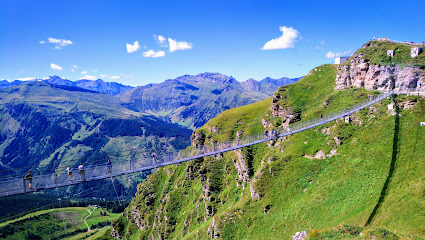
Schlossalmbahn Gastein
Experience the breathtaking beauty and thrilling adventures at Schlossalmbahn Gastein, the ultimate alpine escape for both winter and summer enthusiasts.
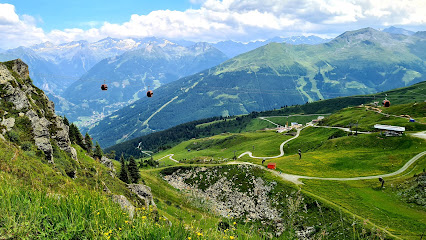
Gasteiner Wasserfall
Experience the stunning Gasteiner Wasserfall, a breathtaking natural attraction in Bad Gastein, surrounded by the enchanting beauty of the Austrian Alps.
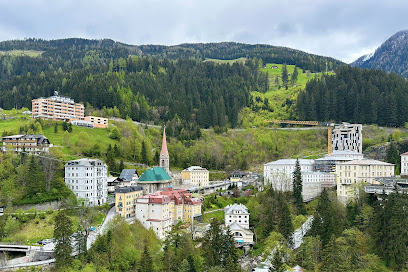
Flying Waters (Zip Line)
Unleash your inner adventurer at Flying Waters, the ultimate zip line experience in Bad Gastein, surrounded by breathtaking alpine scenery.
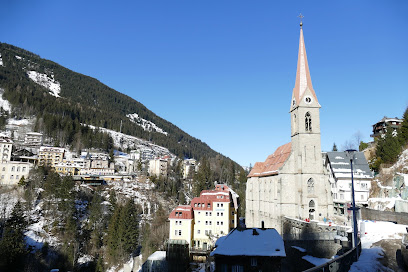
Glocknerblick
Discover unforgettable panoramic views at Glocknerblick, the premier observation deck in Badgastein, Austria, overlooking the stunning Grossglockner mountain.
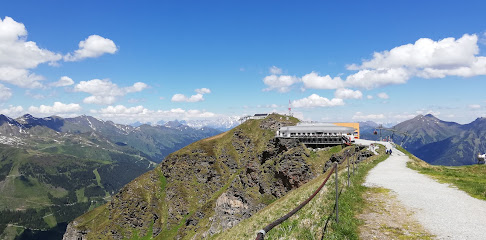
Kursaal
Explore the rich cultural heritage of Austria at the Kursaal in Bad Hofgastein, where history and art come together in an enchanting setting.

Entrische Kirche
Explore Entrische Kirche, a captivating historical landmark in Dorfgastein, surrounded by stunning alpine landscapes and rich cultural heritage.
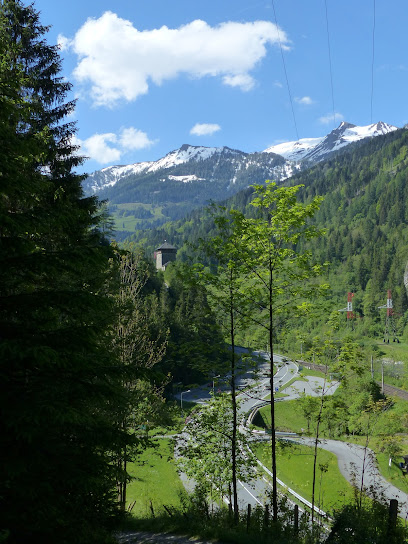
Stubnerkogel Felsenweg
Discover stunning views and breathtaking landscapes at Stubnerkogel Felsenweg, a premier observation deck in Badgastein, Austria.
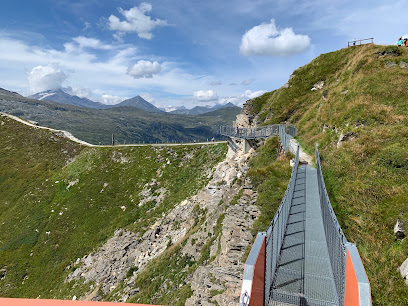
Bad Hofgastein Wasserfall
Explore the breathtaking beauty of Bad Hofgastein Wasserfall, a stunning natural wonder amidst the picturesque Austrian Alps, perfect for relaxation and adventure.
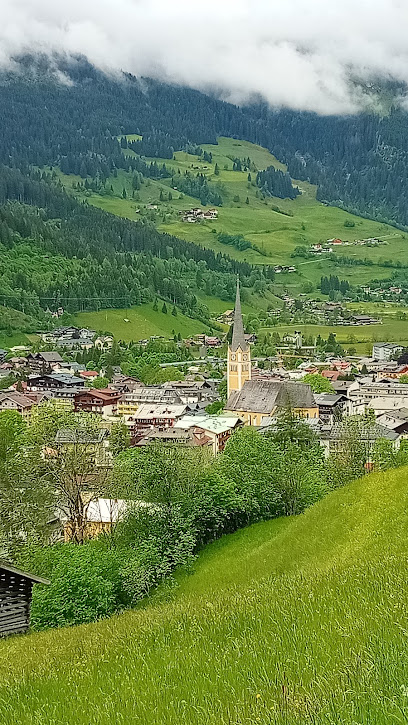
Gasteiner Museum
Explore the captivating history and cultural heritage of Bad Gastein at the Gasteiner Museum, a must-visit destination for every traveler.
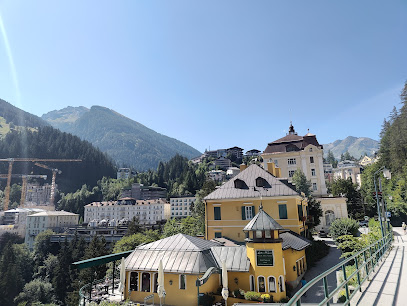
Katharinastollen
Discover the breathtaking trails and stunning alpine views at Katharinastollen, a must-visit hiking area in Bad Hofgastein, Austria.
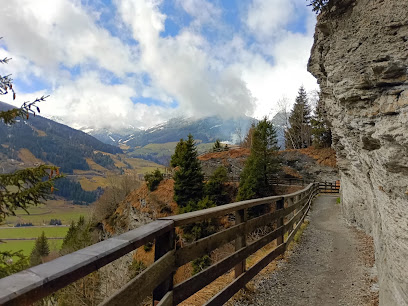
Speicherteich Schlossalmbahn
Discover the breathtaking beauty and serenity of Speicherteich Schlossalmbahn in Bad Hofgastein, a perfect retreat for nature lovers and adventure seekers.
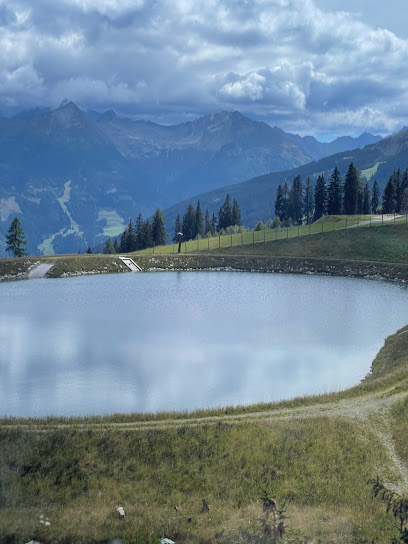
Sendleiten Talstation
Discover the stunning Sendleiten Talstation in Bad Hofgastein, a gateway to unforgettable hiking and skiing adventures in the majestic Austrian Alps.
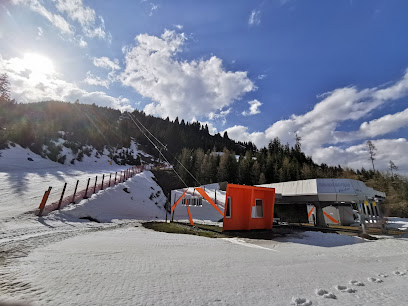
Thermalwasserbrunnen Bad Gastein
Experience the rejuvenating power of nature at Thermalwasserbrunnen Bad Gastein, where natural thermal waters meet breathtaking Alpine beauty.
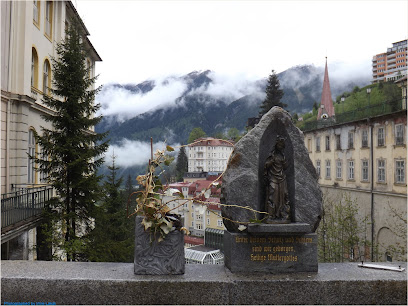
Thermalwasserbrunnen
Experience the soothing thermal waters of Thermalwasserbrunnen in Bad Hofgastein, where relaxation meets stunning alpine beauty.
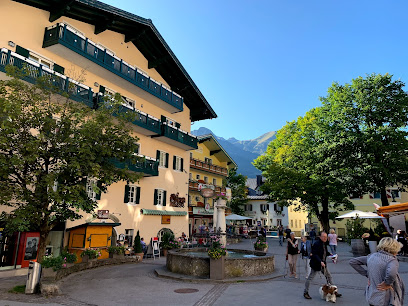
Unmissable attractions to see
Stubnerkogel Suspension Bridge
Discover the stunning Stubnerkogel Suspension Bridge in Bad Gastein, offering breathtaking views and thrilling hiking opportunities in the Austrian Alps.

Schlossalmbahn Gastein
Explore Schlossalmbahn Gastein, a stunning ski resort and hiking area in the Austrian Alps, perfect for year-round outdoor adventures and breathtaking mountain views.
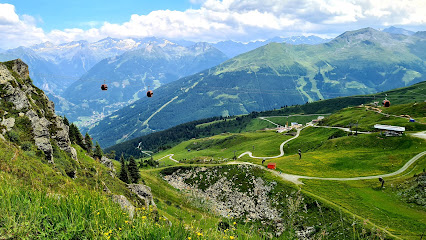
Skischaukel Schlossalm-Angertal-Stubnerkogel
Discover the thrill of skiing and the beauty of hiking at Skischaukel Schlossalm-Angertal-Stubnerkogel, a year-round alpine playground in Austria.
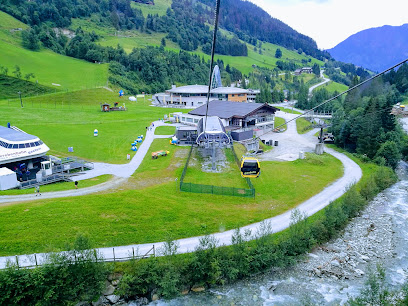
Gasteiner Bergbahnen AG
Discover Gasteiner Bergbahnen AG, a stunning ski resort and mountain cable car experience in Bad Hofgastein, perfect for year-round outdoor adventures.
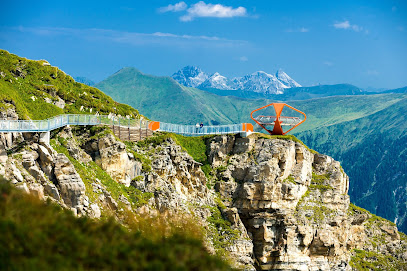
Flying Waters (Zip Line)
Experience the thrill of soaring through the skies at Flying Waters, zip lining over breathtaking waterfalls and stunning mountain vistas in Bad Gastein.
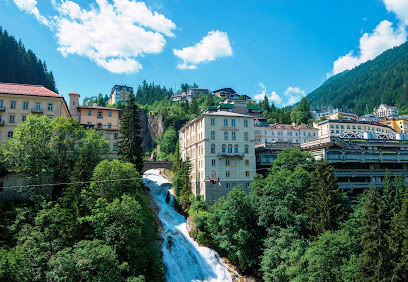
Burg Klammstein
Experience the rich history and breathtaking views at Burg Klammstein, a cultural landmark in the heart of Dorfgastein, Austria.
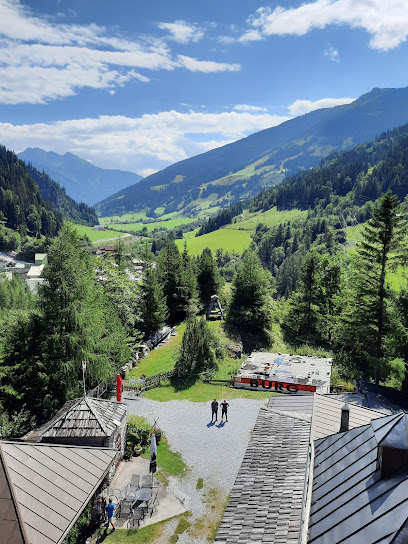
Glocknerblick
Glocknerblick: An awe-inspiring observation deck in Badgastein, offering panoramic views of the stunning Austrian Alps for nature lovers and adventure seekers.
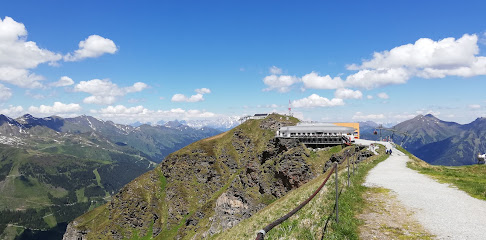
Gasteiner Badesee
Discover Gasteiner Badesee, a stunning swimming lake nestled in the Austrian Alps, perfect for relaxation, swimming, and outdoor adventures.
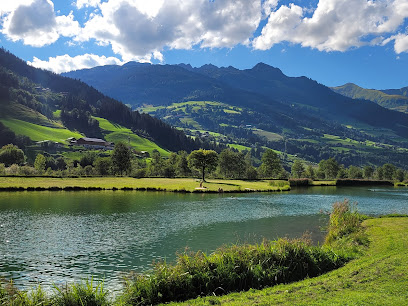
Hunting archery course Bad Gastein
Unleash your inner archer at Bad Gastein's stunning Hunting Archery Course, where adventure meets breathtaking alpine landscapes.
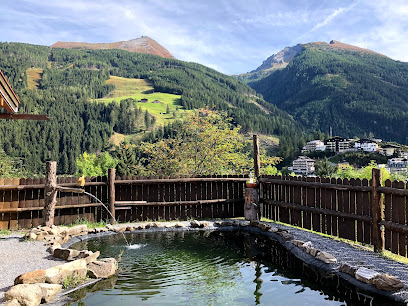
Wasserfallweg - Bad Gastein
Discover the serene beauty of Wasserfallweg in Bad Gastein – a stunning hiking trail with breathtaking waterfalls and lush landscapes.
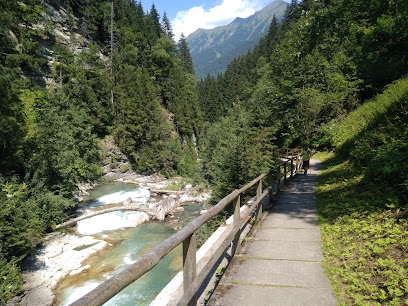
Zirbenweg
Discover the breathtaking Zirbenweg hiking trail in Badgastein, Austria, where stunning Alpine vistas and serene pine forests await outdoor enthusiasts.

Kursaal
Explore the historical Kursaal in Bad Hofgastein, a captivating tourist attraction and museum showcasing the rich culture of the region.
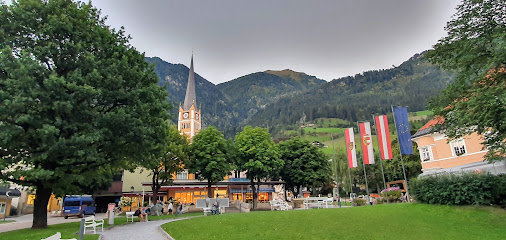
Entrische Kirche
Discover the enchanting Entrische Kirche, a historical landmark in Dorfgastein, surrounded by stunning alpine scenery and rich cultural heritage.
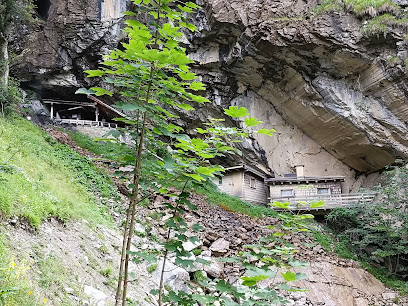
Gasteiner Höhenweg
Explore the Gasteiner Höhenweg: a stunning hiking trail offering breathtaking views and a serene escape in the heart of the Austrian Alps.
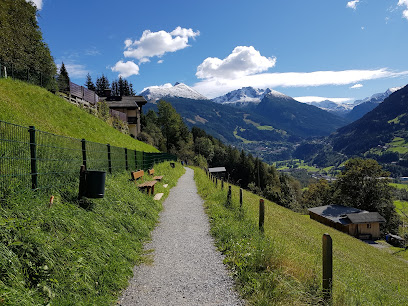
Gasteiner Ache Wasserfall
Explore the enchanting Gasteiner Ache Wasserfall, a must-visit natural wonder in the Austrian Alps, perfect for hiking and breathtaking views.
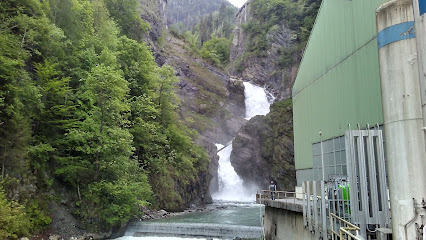
Essential places to dine
Gastein Alm
Experience authentic Austrian cuisine at Gastein Alm in Bad Hofgastein - where traditional flavors meet modern dining.
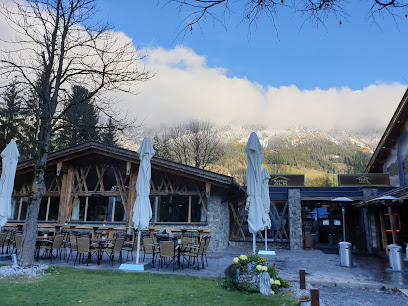
Gasthaus Jägerhäusl
Experience authentic Austrian cuisine at Gasthaus Jägerhäusl in Bad Gastein - where tradition meets taste amidst stunning mountain views.
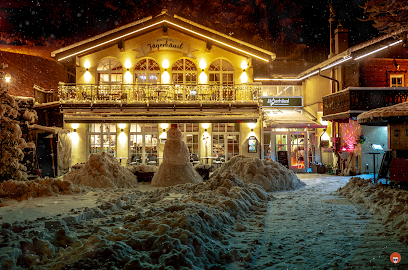
Mountain restaurant Kleine Scharte
Discover exquisite Alpine dining at Mountain Restaurant Kleine Scharte, where breathtaking views meet delicious local cuisine.
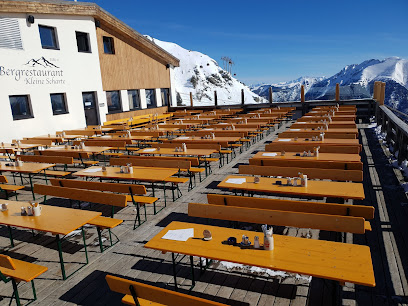
Kraut & Rüben
Experience authentic Austrian cuisine at Kraut & Rüben in Bad Hofgastein – where local flavors meet warm hospitality.
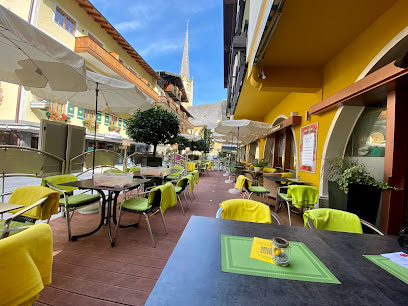
Bergstadl Bad Gastein
Experience authentic Austrian cuisine at Bergstadl Bad Gastein, nestled in breathtaking alpine scenery perfect for food lovers and adventure seekers.
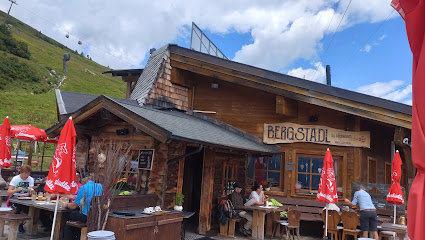
Schmaranz
Discover authentic organic cuisine at Schmaranz in Bad Hofgastein—where tradition meets nature in every delicious bite.
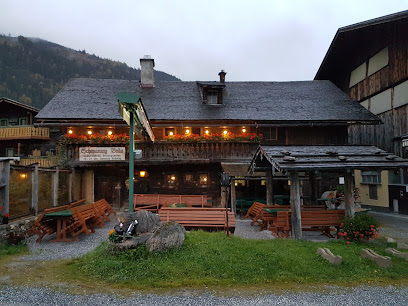
Restaurant Auszeit Dinner & Bar OG
Experience exquisite dining at Restaurant Auszeit Dinner & Bar in Bad Hofgastein, where local flavors meet international cuisine amidst stunning alpine views.

Gastronomia Pane e Vino
Experience authentic Italian flavors at Gastronomia Pane e Vino in Bad Hofgastein – where every meal is a celebration of taste and tradition.
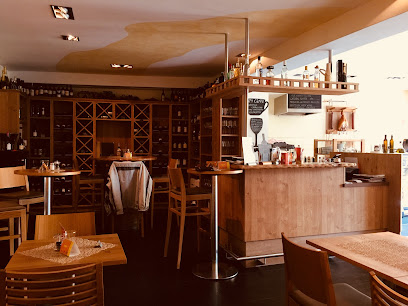
Orania-Stüberl
Discover authentic Austrian cuisine at Orania-Stüberl in Bad Gastein, where traditional flavors meet warm hospitality.
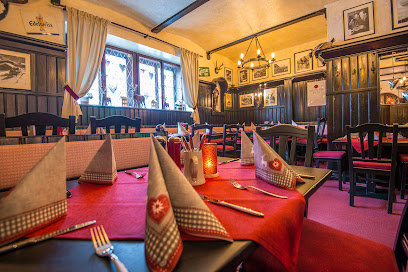
Schafflinger Alm
Discover the flavors of Austria at Schafflinger Alm, where traditional cuisine meets breathtaking mountain views in Bad Gastein.

La Piccola Italia
Experience authentic Italian cuisine at La Piccola Italia in Bad Hofgastein, where every dish tells a story of tradition and flavor.
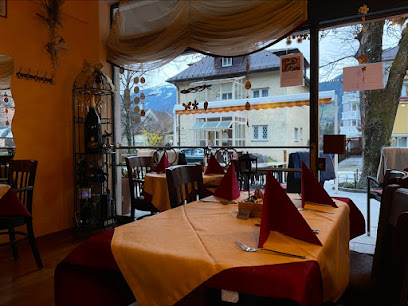
Restaurant Goldbergstüberl
Experience authentic Austrian cuisine at Restaurant Goldbergstüberl in Bad Hofgastein - where local flavors meet warm hospitality.
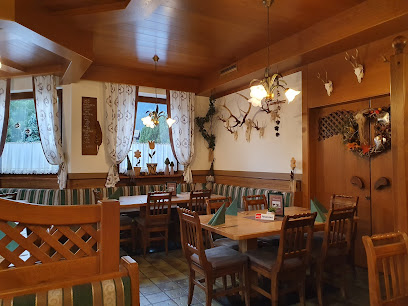
Gipfelrestaurant Stubner
Experience exquisite alpine dining at Gipfelrestaurant Stubner, where traditional Austrian cuisine meets stunning mountain vistas.
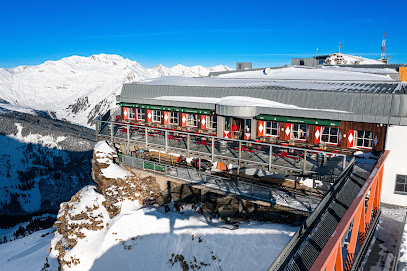
Restaurant Aurum
Experience exquisite Austrian cuisine at Restaurant Aurum in Bad Hofgastein - a culinary gem blending tradition with innovation.
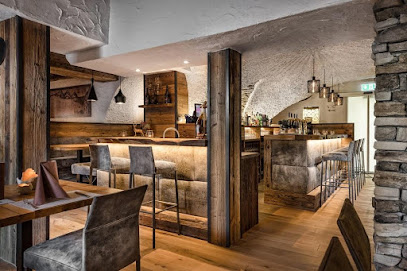
Panorama-Restaurant Silberkrug
Experience exquisite dining at Panorama-Restaurant Silberkrug with stunning mountain views in Bad Gastein.
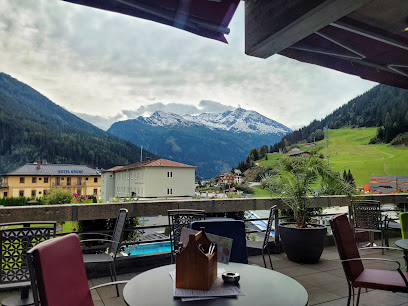
Markets, malls and hidden boutiques
SPAR
Explore the heart of Bad Hofgastein at SPAR Supermarket, where quality meets affordability in a delightful grocery shopping experience.
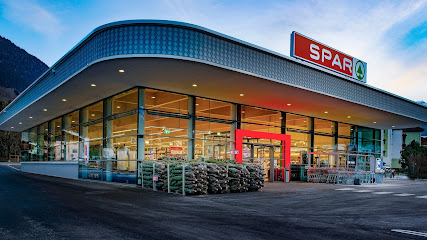
Lagerhaus Gastein
Explore Lagerhaus Gastein in Bad Hofgastein for top-tier building materials and a vibrant garden center, perfect for DIY enthusiasts and locals alike.
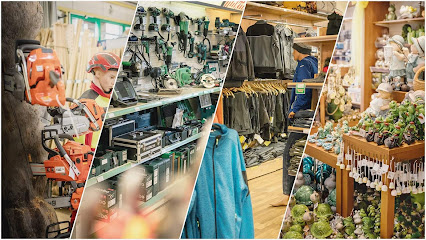
Sport Fleiss PREMIUM
Explore the best of winter sports at Sport Fleiss PREMIUM, where quality gear meets expert service in Bad Hofgastein.

KWP Beautiful Things
Discover unique gifts, local delicacies, and a cozy café at KWP Beautiful Things in Bad Gastein, a perfect stop for every traveler.
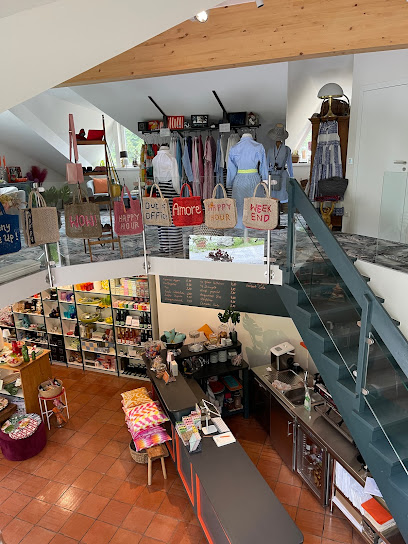
Rainer - dress you
Explore Rainer - Dress You in Bad Hofgastein for fashionable clothing and accessories for the whole family, all in a welcoming and stylish environment.
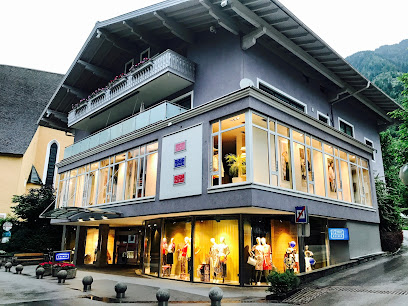
BIPA
Explore BIPA in Bad Hofgastein for an exceptional selection of cosmetics, skincare, and fragrances amidst stunning alpine scenery.
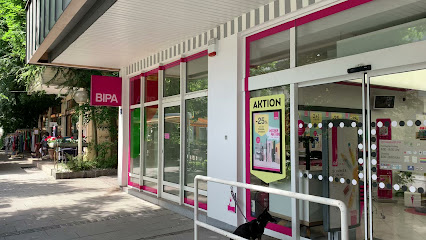
LIBRO
Explore LIBRO in Bad Hofgastein, Austria – your go-to gift shop for unique souvenirs, quality stationery, and delightful toys.
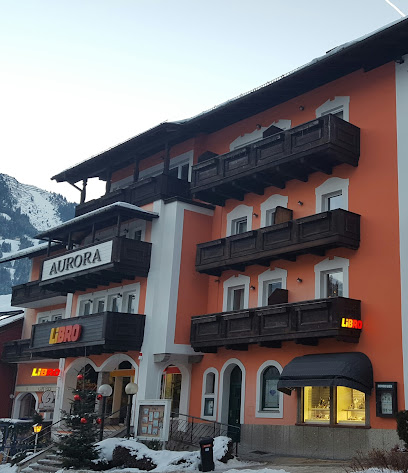
Steira-Shop
Explore Steira-Shop in Bad Hofgastein for unique gifts, local groceries, and authentic Austrian souvenirs that capture the heart of the Alps.

W.Szedlarik Buch- Papier- u Spielwarenhandel e.U.
Explore the enchanting W.Szedlarik Buch- Papier- u Spielwarenhandel e.U., a treasure trove of books, stationery, and toys in Bad Hofgastein, Austria.
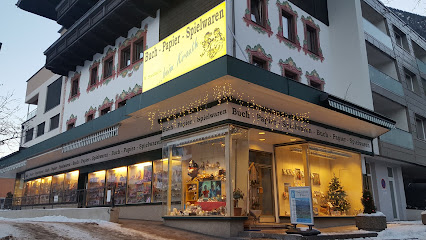
Gschäftl
Discover unique souvenirs and handmade treasures at Gschäftl, the charming gift shop in the heart of Bad Gastein.
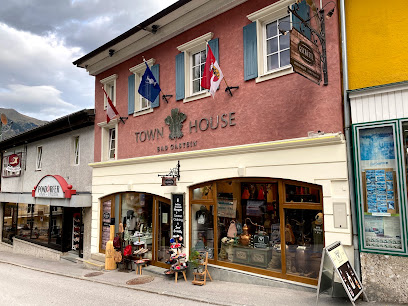
Fashion Egger - Die Fashion-Boutique Gastein
Explore Fashion Egger in Bad Hofgastein for trendy apparel and unique accessories that capture the spirit of Austrian style.
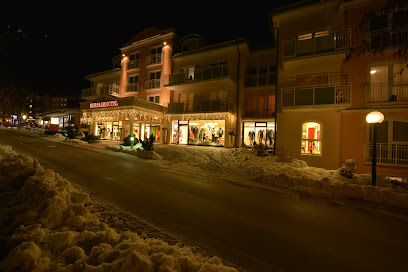
Fetzig
Explore Fetzig in Bad Hofgastein for trendy women's and youth clothing along with chic fashion accessories in a delightful shopping atmosphere.
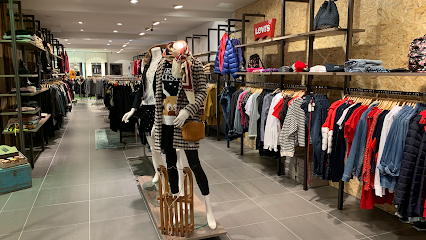
Parfumerie Brigitte GmbH
Discover exquisite fragrances at Parfumerie Brigitte GmbH in Bad Hofgastein, where every scent tells a unique story.
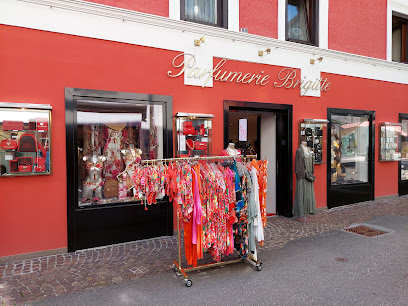
Souvenir Shop Bad Gastein
Discover unique gifts and local treasures at Souvenir Shop Bad Gastein – a must-visit for every traveler looking for memorable souvenirs.
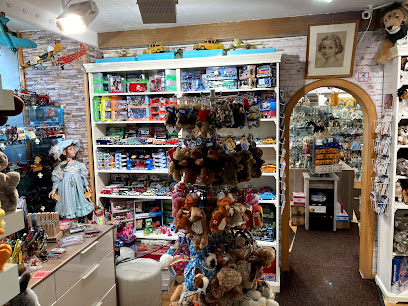
PAP-Laden
Explore authentic Trachten fashion at PAP-Laden in Bad Hofgastein, where tradition meets style in every garment.
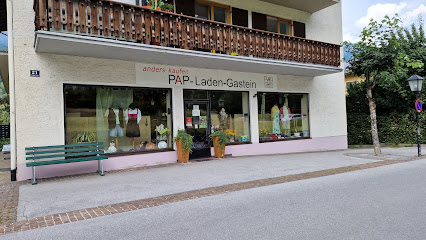
Essential bars & hidden hideouts
Gastein Alm
Experience the flavors of Austria at Gastein Alm, a cozy bar and restaurant in Bad Hofgastein offering delicious pizzas and traditional dishes.
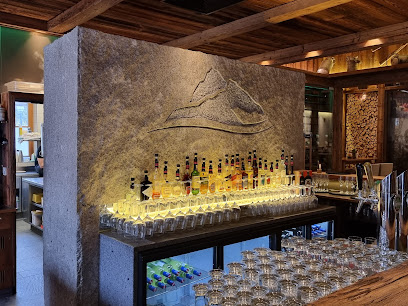
Schmaranz
Discover Schmaranz in Bad Hofgastein: A delightful organic restaurant and brewpub offering local flavors and cozy accommodations.
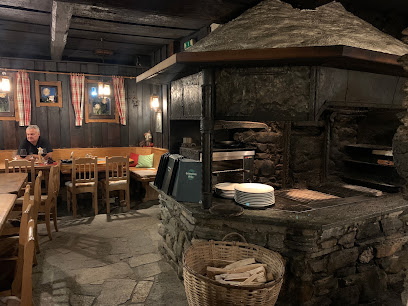
Silver Bullet Bar
Discover the lively atmosphere of Silver Bullet Bar in Bad Gastein, where local culture meets a cozy retreat for unforgettable evenings.
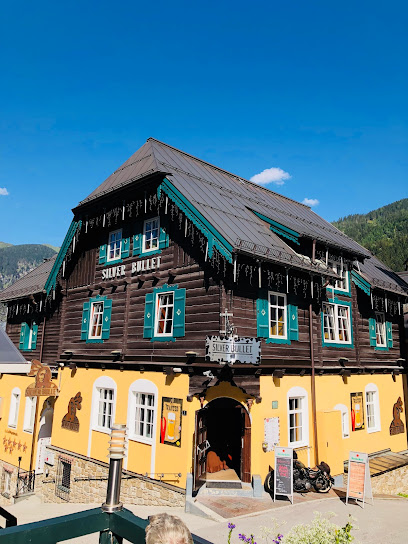
Hexenhäusl
Experience the vibrant nightlife at Hexenhäusl in Bad Gastein, where cozy ambience meets exquisite drinks and lively entertainment in the heart of the Austrian Alps.
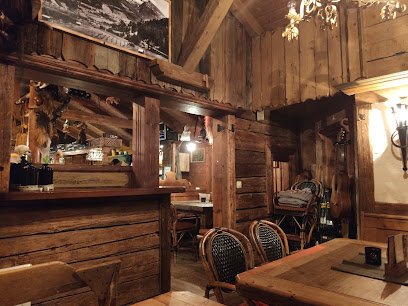
Haeggbloms BAR
Discover the vibrant nightlife at Haeggbloms BAR in Bad Gastein, offering exquisite drinks, lively music, and an unforgettable atmosphere for all visitors.
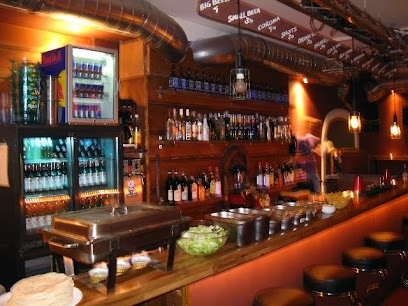
SISI Cafe-Bistro-Bar
Discover SISI Cafe-Bistro-Bar in Bad Gastein, where cozy ambiance meets delectable cuisine and a wide selection of beverages for the perfect retreat.
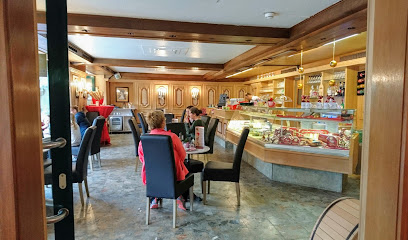
Lederhosenbar
Experience the heart of Bad Gastein's nightlife at Lederhosenbar, a premier live music venue offering unforgettable performances and a vibrant atmosphere.
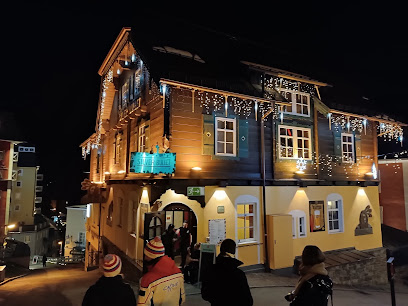
Eisschützenstüberl
Experience the cozy charm of Eisschützenstüberl in Bad Gastein, where friendly service and relaxing drinks await after your alpine adventures.
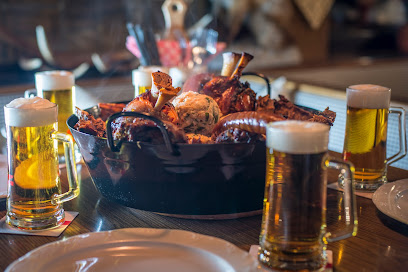
Aliin BAR
Discover Aliin BAR in Bad Hofgastein, an inviting bar offering a selection of drinks in a cozy atmosphere perfect for relaxation and socializing.
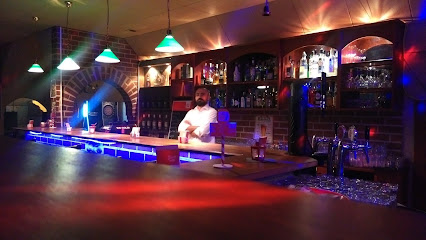
Moons Pub Gastein
Discover the vibrant nightlife and cozy ambiance of Moons Pub Gastein, a must-visit bar in the heart of Bad Gastein, Austria.
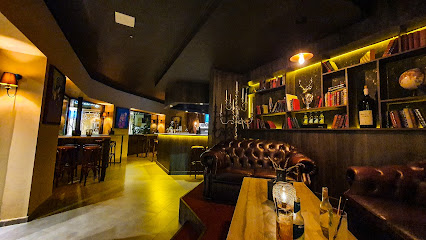
Galerie Cafe
Discover the warm ambiance and delightful drinks at Galerie Cafe, the perfect bar experience in Bad Hofgastein, Austria.
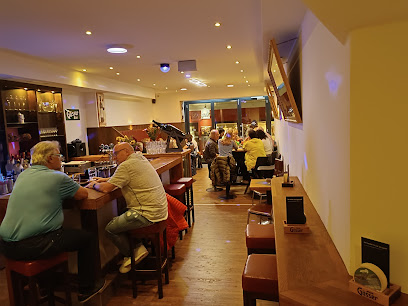
Bar Pub Stazione Blockhäusl
Discover the lively ambiance of Bar Pub Stazione Blockhäusl, your go-to bar for après-ski fun in Bad Gastein, Austria.
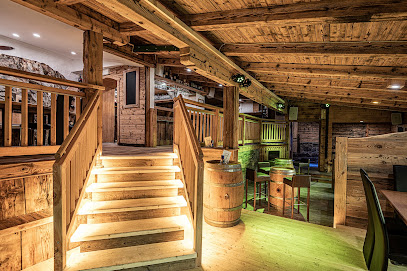
FEUERBAR Bad Hofgastein * Terrace * Grill * Après-Ski
Unwind with stunning views and delightful grills at FEUERBAR Bad Hofgastein – the ultimate après-ski destination.
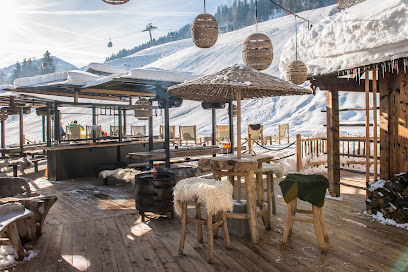
Eden's Pub
Experience the vibrant nightlife of Bad Gastein at Eden's Pub, where local charm meets exceptional drinks and entertainment.
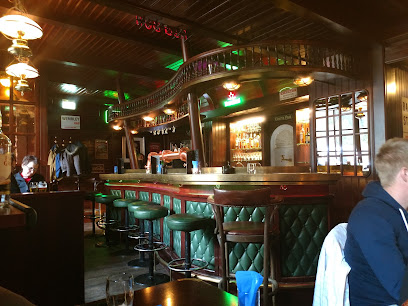
Haitzing Fuchsbau Bar
Experience the inviting atmosphere and delightful drinks at Haitzing Fuchsbau Bar in Bad Hofgastein, where relaxation meets alpine charm.
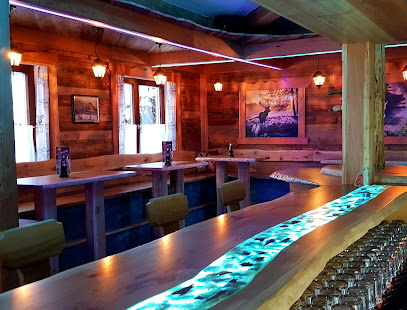
Local Phrases about Gastein Valley
-
- HelloGriaß di
[Gree-ahs dee] - GoodbyePfiat di
[Pfee-aht dee] - YesJa
[Yah] - NoNein
[Nine] - Please/You're welcomeBitte
[Bit-teh] - Thank youDanke
[Dahn-keh] - Excuse me/SorryEntschuldigung
[Ent-shool-dee-goong] - How are you?Wie geht es dir?
[Vee gate es deer?] - Fine. And you?Gut. Und dir?
[Goot. Oond deer?] - Do you speak English?Sprechen Sie Englisch?
[Shpre-khen zee Eng-leesh?] - I don't understandIch verstehe nicht
[Ick fer-shtay-eh nickt]
- HelloGriaß di
-
- I'd like to see the menu, pleaseIch würde gerne die Speisekarte sehen, bitte
[Ick vur-deh gehr-neh dee Shay-zeh-kahr-teh zay-en, bit-teh] - I don't eat meatIch esse kein Fleisch
[Ick ess-eh kine Fly-sh] - Cheers!Prost!
[Prohst!] - I would like to pay, pleaseIch möchte bitte zahlen
[Ick murk-tuh bit-teh tsah-len]
- I'd like to see the menu, pleaseIch würde gerne die Speisekarte sehen, bitte
-
- Help!Hilfe!
[Hil-feh!] - Go away!Geh weg!
[Geh vekh!] - Call the Police!Rufen Sie die Polizei!
[Roo-fen zee dee Po-lee-tsy] - Call a doctor!Rufen Sie einen Arzt!
[Roo-fen zee i-nen Arts] - I'm lostIch habe mich verirrt
[Ick hah-be mikh fer-eert] - I'm illIch bin krank
[Ick been krank]
- Help!Hilfe!
-
- I'd like to buy...Ich möchte kaufen...
[Ick murk-tuh cow-fen] - I'm just lookingIch schaue nur
[Ick show-eh noor] - How much is it?Wie viel kostet es?
[Vee feel koh-stet es?] - That's too expensiveDas ist zu teuer
[Dahs ist tsoo toy-er] - Can you lower the price?Können Sie den Preis senken?
[Kern-en zee den Price zank-en?]
- I'd like to buy...Ich möchte kaufen...
-
- What time is it?Wie spät ist es?
[Vee shpayt ist es?] - It's one o'clockEs ist ein Uhr
[Es ist iyn oor] - Half past (10)Halb (10)
[Halb (tsen)] - MorningMorgen
[Morg-en] - AfternoonNachmittag
[Nah-mit-tahk] - EveningAbend
[Ah-bend] - YesterdayGestern
[Ges-tern] - TodayHeute
[Hoy-teh] - TomorrowMorgen
[Morg-en] - 1Eins
[Eyns] - 2Zwei
[Tzvey] - 3Drei
[Dry] - 4Vier
[Feer] - 5Fünf
[Foonf] - 6Sechs
[Zeks] - 7Sieben
[Zee-ben] - 8Acht
[Akht] - 9Neun
[Noy-n] - 10Zehn
[Tsen]
- What time is it?Wie spät ist es?
-
- Where's a/the...?Wo ist ein/der...?
[Vo ist iyn/der] - What's the address?Was ist die Adresse?
[Vas ist dee Ah-dreh-suh] - Can you show me (on the map)?Können Sie mir zeigen (auf der Karte)?
[Kern-en zee meer tsay-gen (owf der Kar-teh)] - When's the next (bus)?Wann kommt der nächste (Bus)?
[Vann kohmt der nek-steh (Boos)] - A ticket (to ....)Eine Fahrkarte (nach ....)
[I-nuh Fah-kar-teh (nakh)]
- Where's a/the...?Wo ist ein/der...?
History of Gastein Valley
-
Gastein Valley, known for its healing hot springs, was discovered by the Romans over 2,000 years ago. They established settlements in the area, drawn by the therapeutic properties of the thermal waters. Archaeological evidence, such as Roman coins and pottery, has been found in the valley, attesting to its significance during Roman times.
-
During the Middle Ages, Gastein Valley became a central hub for mining, particularly for gold and silver. The town of Bad Gastein, originally known as Wildbad Gastein, flourished as miners and merchants flocked to the area. The prosperity brought by mining operations led to the construction of beautiful buildings and churches, many of which still stand today.
-
The 19th century marked the beginning of Gastein Valley's fame as a spa destination. European nobility, including Emperor Franz Joseph I of Austria and Empress Elisabeth (Sisi), frequented the region to benefit from its curative waters. The construction of grand hotels and spa facilities transformed Bad Gastein into a luxurious retreat for the elite.
-
During World War II, Gastein Valley was not immune to the tumultuous events. The Grand Hotel in Bad Gastein served as a military hospital. Post-war, the valley saw a resurgence in tourism, with renewed interest in its natural beauty and therapeutic offerings. The region worked hard to rebuild and modernize, maintaining its reputation as a premier health resort.
-
Today, Gastein Valley is a blend of historical charm and modern amenities. Its thermal spas, ski resorts, and hiking trails attract visitors year-round. The valley continues to celebrate its rich history through museums, festivals, and preserved historical sites, ensuring that the legacy of Gastein Valley remains vibrant and accessible to all.
Gastein Valley Essentials
-
Gastein Valley is located in the Salzburg region of Austria. The nearest international airport is Salzburg Airport (SZG), approximately 90 kilometers away. From Salzburg, you can take a train directly to Bad Gastein, Bad Hofgastein, or Dorfgastein. The train journey offers scenic views and typically takes around 1.5 to 2 hours. Alternatively, you can rent a car and drive, which takes about 1.5 hours from Salzburg.
-
The Gastein Valley is well-connected by public transportation. The ÖBB trains link the main towns (Bad Gastein, Bad Hofgastein, and Dorfgastein) within the valley and to other parts of Austria. Local buses run frequently and are a convenient way to explore different parts of the valley. Taxis are available but can be pricey. Renting a car is an option if you prefer flexibility, but be aware of narrow mountain roads and parking regulations.
-
The official currency in Austria is the Euro (EUR). Credit and debit cards are widely accepted in hotels, restaurants, and shops. However, it is advisable to carry some cash, especially for smaller establishments and rural areas. ATMs are readily available in the main towns of the Gastein Valley.
-
Gastein Valley is generally a safe destination for tourists. Crime rates are low, but it is always best to take standard precautions. Avoid leaving valuables unattended and be mindful of your belongings in crowded areas. There are no specific high-crime areas targeting tourists, but it is always best to stay vigilant and aware of your surroundings.
-
In case of an emergency, dial 112 for immediate assistance, which connects you to emergency services including police, fire, and medical help. Hospitals and clinics are available in the main towns. It is highly recommended to have travel insurance that covers medical emergencies. Pharmacies are also available for minor health issues.
-
Fashion: Do dress in layers due to changing mountain weather. Avoid overly casual outfits in upscale restaurants. Religion: Do respect local customs and traditions, especially when visiting churches. Public Transport: Do validate your ticket before boarding. Don’t speak loudly on public transport. Greetings: Do greet people with a friendly 'Grüß Gott' or 'Hallo'. Eating & Drinking: Do try local Austrian dishes and wines; don’t rush through meals, as dining is a leisurely activity.
-
To experience Gastein Valley like a local, visit the thermal spas in Bad Gastein and Bad Hofgastein. Engage with locals at the weekly markets where you can buy fresh produce and regional specialties. Take part in traditional events and festivals to immerse yourself in local culture. Enjoy hiking and skiing, which are popular activities among locals.
Trending Landmarks in Gastein Valley
-
Stubnerkogel Suspension Bridge
-
Schlossalmbahn Gastein
-
Gasteiner Wasserfall
-
Flying Waters (Zip Line)
-
Glocknerblick
-
Kursaal
-
Entrische Kirche
-
Stubnerkogel Felsenweg
-
Bad Hofgastein Wasserfall
-
Gasteiner Museum
-
Katharinastollen
-
Speicherteich Schlossalmbahn
-
Sendleiten Talstation
-
Thermalwasserbrunnen Bad Gastein
-
Thermalwasserbrunnen
Nearby Cities to Gastein Valley
-
Things To Do in Zell am See
-
Things To Do in Hallstatt
-
Things To Do in Kitzbühel
-
Things To Do in Salzburg
-
Things To Do in Kranjska Gora
-
Things To Do in Klagenfurt
-
Things To Do in Bled
-
Things To Do in Bohinj
-
Things To Do in Innsbruck
-
Things To Do in Nova Gorica
-
Things To Do in Škofja Loka
-
Things To Do in Linz
-
Things To Do in Munich
-
Things To Do in Kamnik
-
Things To Do in Ljubljana











